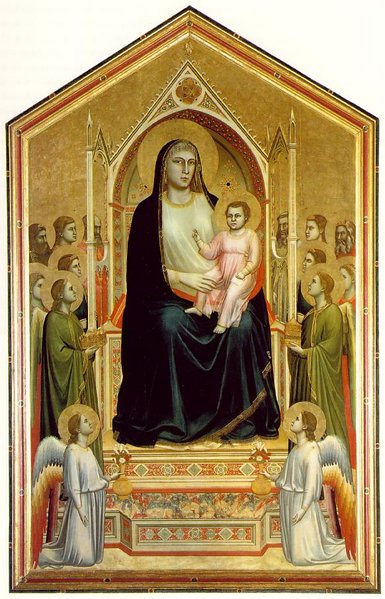The Madonna Enthroned show the numerous styles of art that influenced Giotto. In both the gold coloring used throughout the artwork and the flattened gold background, Giotto's art continued the traditional Italo-Byzantine style so popular in the proto-Renaissance time period. The altarpiece represents a formalized representation of an icon, still retaining the stiffness of Byzantine art, and Giotto retained the hierarchy of scale, making the centralized Madonna and the Christ Child much larger in size than the surrounding saints and religious figures.
Giotto's figures however escape the bounds of Byzantine art. His figures are weighty and are reminiscent of three-dimensional sculptures, such as that in classical Roman sculpture. The Madonna's intricately decorated throne, which itself is an Italian Gothic design, has a very specific use of colored marble as a surface decoration. This use of marble was a style that ended in the early Christian time period, and thus gives a clue that Giotto was knowledgeable of art of that time period.
Sources:
http://faculty.etsu.edu/kortumr/17latemiddleages/htmdescriptionpages/11madonna.htm
http://en.wikipedia.org/wiki/Ognissanti_Madonna

No comments:
Post a Comment